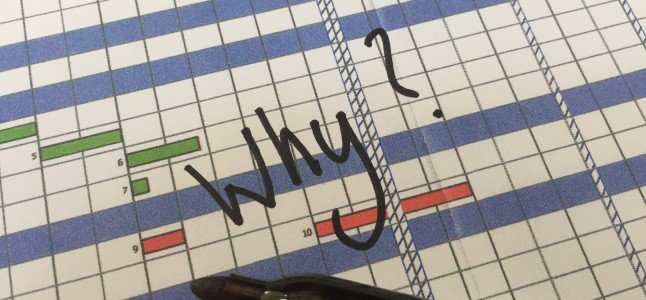
Many consider project planning a waste of time, arguing that environments, circumstances and objectives continuously change. Their experience or impression is that project delivery is all reactive anyway.
“What’s the point?”
Unfortunately, what very often happens, is that the only person who understands the plan is the author themselves. Plans often contain disproportionate levels of undecipherable detail, which leads to misunderstanding and distrust in the plan and process. Industries have been established through software developers’ claims that their products ‘are’ project management and planning. We would disagree.
Whilst arguably an efficient tool for depicting activity against time, the Gantt chart itself, with its many little horizontal bars, in our opinion, has a great deal to answer for in fueling negative feeling towards planning. How often have we experienced a presenter advance to the next slide containing the project plan, commenting ‘…don’t worry if you cannot read it…’. We ask: ‘Then what’s the point?’
The benefits of project planning
So if you’re in agreement that it seems to be a waste of time, why bother with the project plan?
We would ask a different question: What project would not be improved by establishing the following?
- A common and agreed delivery strategy focused on project objectives;
- A clear judgement as to whether the project can actually be delivered;
- A real engagement of project stakeholders; and, importantly,
- A baseline that is measurable and permits project control mechanisms.
Assuming the above sounds like a worthy list of outcomes, how can a project plan achieve them?
What does a good project plan look like?
Well it certainly shouldn’t be a blow by blow activity schedule through the entire project lifecycle. There are other plans that need such detail. The project plan, however, has a different purpose and will not help with realising the above.
Ideally, the plan fits onto a single piece of paper. In fact, if it can’t, then the author has somewhat missed the point. It certainly doesn’t need to be a Gantt chart, in fact it’s often better it isn’t. There is nothing wrong with it being hand-drawn – indeed, we are yet to find software that improves upon paper, pen and an experienced brain to develop the plan. There can often also be great benefit if the plan is collaboratively generated as a team.
The most important attribute for the plan is it being legible and understood by all. It must be uncluttered, without need of explanation and instantly recognisable as something deliverable. Yet not all project managers have the experience or skills to develop a good project plan.
Creating a solid platform
At Tandem Projects, we call the plan a ‘strategic plan of work’. We promote that it establishes a solid platform through which the project is delivered. We guarantee that the strategic plan will deliver:
- Strategic alignment
- Objective focus
- Leadership, accountability and agreed responsibilities
- A baseline to judge and make informed decisions
- Quality management
- Actual management of risk
- Continuous review and improvement
Project planning ‘if done well’ is therefore not a waste of time and actually can make a tangible difference. For your next project, take the time to get it done right, develop a solid and realistic strategic plan – see the difference for yourself.
And if you’re still not a believer, give us 20 minutes, a cup of tea and an open mind to demonstrate…
